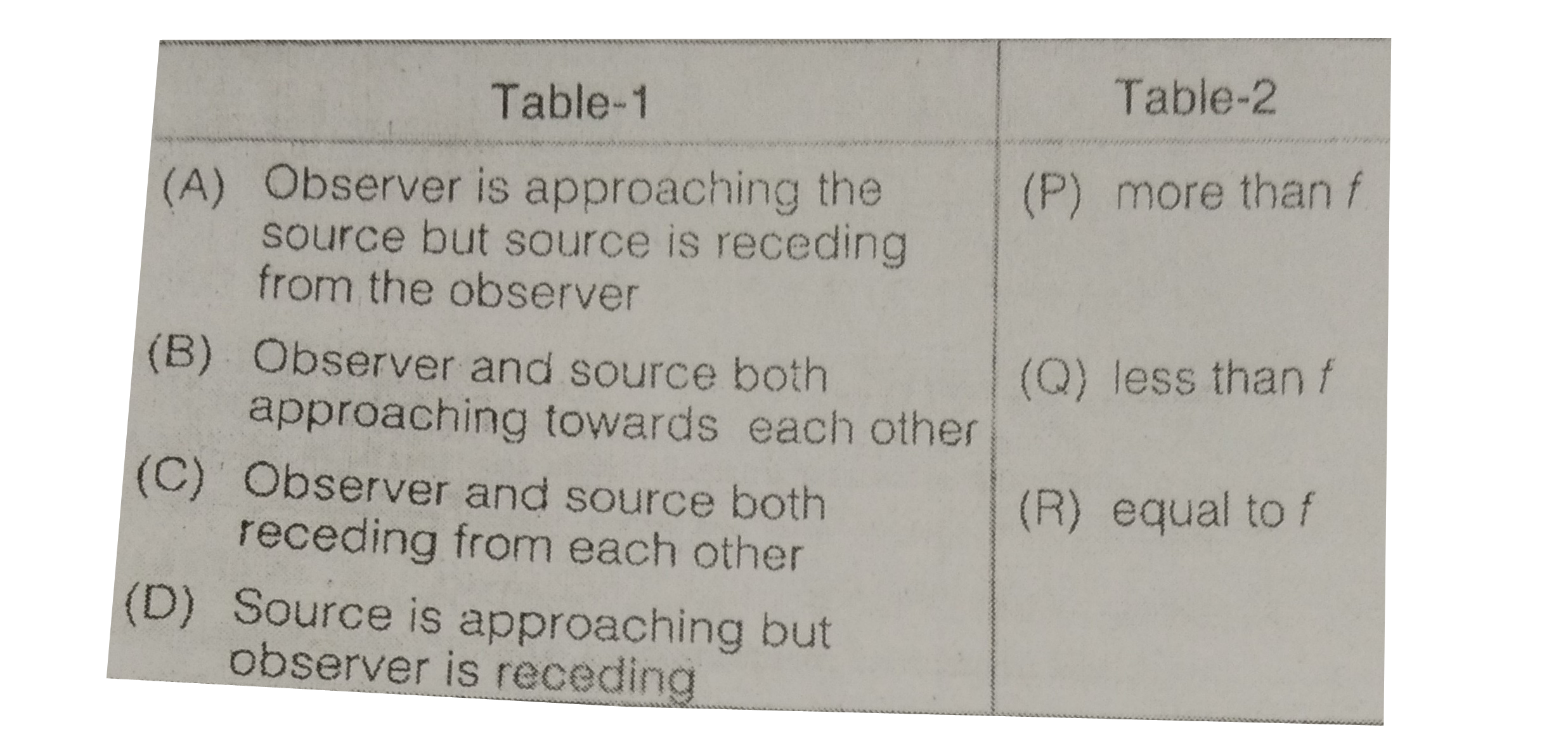Assertion : A sound source is approaching towards a stationary observer along the tine joining them. Then , apparent frequency to the observer will go on increasing.
Reason : If there is no relative motion between source and observer , apparent frequency is equal to the actual frequency.
If both Asseration and Reason are true an dthe Reason is correct explanation of the Asseration.
If both Asseration and Reason are true but Reason is not the correct explanation of Asseration.
If Asseration is true , but the Reason is false.
If Asseration is false but the Reason is true.
The correct Answer is:D
To solve the question, we need to analyze both the assertion and the reason provided.
Step 1: Understand the Assertion
The assertion states that if a sound source is approaching a stationary observer, the apparent frequency to the observer will go on increasing.
- When a sound source moves towards an observer, the sound waves get compressed, leading to an increase in the frequency perceived by the observer. This phenomenon is known as the Doppler effect.
Step 2: Analyze the Reason
The reason states that if there is no relative motion between the source and the observer, the apparent frequency is equal to the actual frequency.
- When there is no relative motion, the sound waves travel towards the observer without any change in their frequency. Thus, the frequency heard by the observer is the same as the frequency emitted by the source.
Step 3: Evaluate the Assertion and Reason
- The assertion is true because the frequency does increase as the source approaches the observer.
- The reason is also true because when there is no relative motion, the apparent frequency equals the actual frequency.
Conclusion
- The assertion is correct, and the reason is also correct. Thus, both statements are true.
Final Answer
- Assertion: True
- Reason: True
The assertion states that if a sound source is approaching a stationary observer, the apparent frequency to the observer will go on increasing.
The reason states that if there is no relative motion between the source and the observer, the apparent frequency is equal to the actual frequency.
- The assertion is true because the frequency does increase as the source approaches the observer.
- The reason is also true because when there is no relative motion, the apparent frequency equals the actual frequency.
- The assertion is correct, and the reason is also correct. Thus, both statements are true.
- Assertion: True
- Reason: True
Topper's Solved these Questions
- BOOK - DC PANDEY ENGLISHCHAPTER - SOUND WAVESEXERCISE - Level 1 Objective34videos
SOUND WAVES
- BOOK - DC PANDEY ENGLISHCHAPTER - SOUND WAVESEXERCISE - Level 1 Subjective45videos
SOUND WAVES
- BOOK - DC PANDEY ENGLISHCHAPTER - SOUND WAVESEXERCISE - Miscellaneous Examples8videos
SOUND WAVES
- BOOK - DC PANDEY ENGLISHCHAPTER - SOLVD PAPERS 2017 NEET, AIIMS & JIPMEREXERCISE - Solved paper 2018(JIPMER)38videos
SOLVD PAPERS 2017 NEET, AIIMS & JIPMER
- BOOK - DC PANDEY ENGLISHCHAPTER - SUPERPOSITION OF WAVESEXERCISE - Level 2 Subjective8videos
SUPERPOSITION OF WAVES
Similar Questions
Assertion : A train is approachinng towards a hill . The driver of the train will hear beats.
Reason : Apparent frequency of reflected sound observerd by driver will be more than the frequency of direct sound observered by him.View SolutionA sound source has frequency f. Source and observer both have same speed.For the apparent frequency observed by observer match the following.
 View Solution
View Solution
Knowledge Check
- Question 1 - Select One
A sound source is moving towards a stationary observer with 1/10 of the speed of sound. The ratio of apparent to real frequency is
A109B(109)2C(1110)2D1110 - Question 2 - Select One
An observer moves towards a stationary source of sound. The percentage change in the apparent frequency is
AzeroB0.05C0.1D0.2 - Question 3 - Select One
At what speed should a source of sound move so that observer finds the apparent frequency equal to half of the original frequency ?
Av2B2vCv/4Dv
A source of sound is travelling towards a stationary observer. The frequency of sound heard by the observer is 25% more that the actual frequency. If the speed of sound is v, that of the source is
View Solutionwhen a source is going away from a stationary observer with the velocity equal to that of sound in air , then the frequency heard by observer is n times the original frequency . The value of n is
View Solution(A): Apparent frequency is equal to actual frequency when there is no relative motion between source and observer.
(R): When there is no relative motion between the source and observer the velocity of sound is zeroView SolutionIn Dopplers effect, when a source moves towards a stationary observer, the apparent increase in frequency is due to
View SolutionAn observer is moving towards the stationary source of sound, then
A. Apparent frequency will be less than the real frequency
B. Apparent frequency will be greater than the real frequency
C. Apparent frequency will be equal to real frequency
D. Only the quality of sound will changeView Solution

